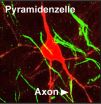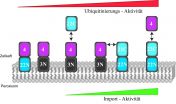(Press-News.org) Philadelphia, PA—Space surveillance is inherently challenging when compared to other tracking environments due to various reasons, not least of which is the long time gap between surveillance updates. "Unlike the air and missile defense environments where objects are frequently observed, the space surveillance environment data is starved, with many objects going several orbital periods between observations," according to researcher Joshua Horwood. "Thus, it is more challenging to predict the future location of these sparsely-seen objects and they have a tendency to get lost using traditional methods. A new way of tracking them, the Gauss von Mises (GVM) distribution, has improved predictive capabilities that permit one to more effectively maintain custody of infrequently-observed space objects."
In a paper published in July in the SIAM/ASA Journal on Uncertainty Quantification, authors Horwood and Aubrey Poore, both of Numerica Corporation, propose a more statistically rigorous treatment of uncertainty in the near-Earth space environment than currently available. The method proposed is a new class of multivariate probability density functions, called the Gauss von Mises (GVM) family of distributions.
"By more faithfully representing the uncertainty in a space object's orbit, the GVM distribution allows one to more accurately predict the future locations of satellites and debris," says Horwood. "Uncertainty propagation using the GVM distribution can be achieved at a computational cost commensurate with traditional methods and can maintain a proper characterization of the uncertainty for up to eight times as long."
It is important to study uncertainty in the space surveillance tracking environment in order to protect space assets and maintain awareness of potentially adversarial space deployments. The proper characterization of uncertainty enables us to allocate resources in order to gain as much information about the system as possible, and detect satellite maneuvers. Better uncertainty quantification also helps us track and look for close approaches between any two space objects, a process called conjunction analysis.
Horwood explains further with an example, "In the problem of conjunction analysis, the use of the GVM distribution can provide a more reliable probability of collision and allows conjunction assessments further into the future. This translates into fewer false alarms and hence fewer expensive maneuver operations that have to be performed on operational spacecraft."
In order to quantify uncertainty, proper characterization of a space object's full state probability density function (PDF) is required to faithfully represent the statistical errors. The GVM distribution approach is supported by a suite of next-generation algorithms for uncertainty propagation, data association, space catalog maintenance, and other space situational awareness functions. What distinguishes the GVM distribution is that it is defined on a cylindrical manifold, and such coordinates, used in conjunction with the GVM distribution, can provide a statistically rigorous treatment of uncertainty needed for orbit determination and tracking.
Methods proposed in this paper will be beneficial for studying various aspects of future space surveillance. "A quantification of the uncertainties in space surveillance is a prerequisite for robustly tracking hundreds of thousands of space objects that are expected in the future," says Horwood. "This involves various levels of research including sensor-level processing (to improve the characteristics of the measurement errors and biases), propagation of uncertainty, dynamics and space environment modeling, inverse problems such as statistical orbit determination, and high performance computing to serve the growing space catalog."
INFORMATION:
Source Article
Gauss von Mises Distribution for Improved Uncertainty Realism in Space Situational Awareness
http://epubs.siam.org/doi/abs/10.1137/130917296
Joshua T. Horwood and Aubrey B. Poore
About the Authors
Joshua Horwood and Aubrey Poore are researchers at Numerica Corporation in Loveland, Colorado.
Where is that spacecraft?
Statistically measuring uncertainty for space surveillance
2014-09-22
ELSE PRESS RELEASES FROM THIS DATE:
Neurosurgery tackles past, current and future concepts of sports concussion
2014-09-22
September 22, 2014 - An estimated 1.68 to 3.8 million sports-related concussions occur in the United States each year, and there are likely a significant number that go unreported. Current Concepts in Sports Concussion is a comprehensive, 16-article supplement of Neurosurgery, official journal of the Congress of Neurological Surgeons. Chicago-area neurosurgeon Gail Rosseau, MD, the lead guest editor, is well known for her longtime commitment to sports-related head injury prevention, and serves on the Board of Directors of USA Football and ThinkFirst. Additional guest editors ...
Comprehensive Neurosurgery supplement covers sports-related concussions
2014-09-22
September 22, 2014 - Neurosurgeons have treated head and spinal sports injuries since the specialty was formed in the early 20th century, with formal efforts to mitigate these injuries dating back to 1931. Current Concepts in Sports Concussion is a comprehensive, 16-article supplement of Neurosurgery, official journal of the Congress of Neurological Surgeons, published by Lippincott Williams & Wilkins, part of Wolters Kluwer Health. The supplement includes a detailed, fascinating history of concussion treatment and research. The lead guest editor is Chicago-area neurosurgeon ...
Communication without detours
2014-09-22
Certain nerve cells take a shortcut for the transmission of information: signals are not conducted via the cell`s center, but around it like on a bypass road. The previously unknown nerve cell shape is now presented in the journal "Neuron" by a research team from Heidelberg, Mannheim and Bonn.
Nerve cells communicate by using electrical signals. Via widely ramified cell structures—the dendrites—, they receive signals from other neurons and then transmit them over a thin cell extension—the axon—to other nerve cells. Axon and dendrites are usually interconnected by the ...
The accelerator of molecular motors
2014-09-22
To their surprise, it turned out to be an old acquaintance: a certain module of the familiar protein Pex22p, which has hitherto always been considered an anchor protein. The researchers report their findings in PLoS One.
Essential: importing enzymes into peroxisome
Peroxisomes are of vital importance for the enzymatic degradation of long-chain fatty acids and cellular toxins. In order for them to fulfil this function, the relevant enzymes have to be imported into the peroxisomes first. The bulk is brought into a peroxisome by the import receptor Pex5p. That receptor, ...
Why do leaves change color in the fall? (video)
2014-09-22
WASHINGTON, Sept. 22, 2014 — It's the first day of autumn, and the telltale signs are here: crisp weather, pumpkin spice lattes and, most importantly, the leaves are changing colors. Ever wonder why some leaves turn red, others yellow and some just turn brown? We'll tell you all about the chemistry behind this seasonal spectacle in the latest Reactions episode. Learn all about it at https://www.youtube.com/watch?v=X0nWmTeQPfo.
Subscribe to the series at Reactions YouTube, and follow us on Twitter @ACSreactions to be the first to see our latest videos.
INFORMATION:The ...
Finding hints of gravitational waves in the stars
2014-09-22
Scientists have shown how gravitational waves—invisible ripples in the fabric of space and time that propagate through the universe—might be "seen" by looking at the stars. The new model proposes that a star that oscillates at the same frequency as a gravitational wave will absorb energy from that wave and brighten, an overlooked prediction of Einstein's 1916 theory of general relativity. The study, which was published today in the Monthly Notices of the Royal Astronomical Society: Letters, contradicts previous assumptions about the behavior of gravitational waves.
"It's ...
New study finds 34 percent of severely injured patients undertriaged in the United States
2014-09-22
According to the American College of Surgeons' Committee on Trauma, patients with severe injuries should be treated at level I or level II trauma centers. Those centers have the resources to provide the best care for those patients.
But 1 out of 3 major trauma patients in 2010 actually received their treatment at lower-level trauma centers or nontrauma centers, according to a new study from the Center for Pediatric Trauma Research and the Center for Injury Research and Policy at Nationwide Children's Hospital. Those patients are "undertriaged." The ACS' Committee on Trauma ...
Mothers of children with autism less likely to have taken iron supplements
2014-09-22
(SACRAMENTO, Calif.) —Mothers of children with autism are significantly less likely to report taking iron supplements before and during their pregnancies than the mothers of children who are developing normally, a study by researchers with the UC Davis MIND Institute has found.
Low iron intake was associated with a five-fold greater risk of autism in the child if the mother was 35 or older at the time of the child's birth or if she suffered from metabolic conditions such as obesity hypertension or diabetes.
The research is the first to examine the relationship between ...
Research evaluates neurodevelomental and medical outcomes in single family room NICU
2014-09-22
The prevalence of preterm birth – the birth of an infant prior to 37 weeks of pregnancy – is a significant health problem that has increased over the past two decades. According to the Centers for Disease Control and Prevention (CDC), preterm birth affects nearly 500,000 babies each year, or one of every eight born in the U.S. While medical care has improved survival rates for preterm infants, questions remain about ways to positively impact the neurodevelopmental outcomes of preterm infants.
Research led by Barry M. Lester, PhD, director of the Brown Center for the ...
E-cigarettes unhelpful in smoking cessation among cancer patients
2014-09-22
In a new study of cancer patients who smoke, those using e-cigarettes (in addition to traditional cigarettes) were more nicotine dependent and equally or less likely to have quit smoking traditional cigarettes than non-users. Published early online in Cancer, a peer-reviewed journal of the American Cancer Society, the findings raise doubts about the potential benefits of e-cigarettes for helping cancer patients give up smoking.
Because of the risks of persistent smoking, all cancer patients who smoke should be advised to quit. But the rising use of e-cigarettes has raised ...
LAST 30 PRESS RELEASES:
Eye for trouble: Automated counting for chromosome issues under the microscope
The vast majority of US rivers lack any protections from human activities, new research finds
Ultrasound-responsive in situ antigen "nanocatchers" open a new paradigm for personalized tumor immunotherapy
Environmental “superbugs” in our rivers and soils: new one health review warns of growing antimicrobial resistance crisis
Triple threat in greenhouse farming: how heavy metals, microplastics, and antibiotic resistance genes unite to challenge sustainable food production
Earthworms turn manure into a powerful tool against antibiotic resistance
AI turns water into an early warning network for hidden biological pollutants
Hidden hotspots on “green” plastics: biodegradable and conventional plastics shape very different antibiotic resistance risks in river microbiomes
Engineered biochar enzyme system clears toxic phenolic acids and restores pepper seed germination in continuous cropping soils
Retail therapy fail? Online shopping linked to stress, says study
How well-meaning allies can increase stress for marginalized people
Commercially viable biomanufacturing: designer yeast turns sugar into lucrative chemical 3-HP
Control valve discovered in gut’s plumbing system
George Mason University leads phase 2 clinical trial for pill to help maintain weight loss after GLP-1s
Hop to it: research from Shedd Aquarium tracks conch movement to set new conservation guidance
Weight loss drugs and bariatric surgery improve the body’s fat ‘balance:’ study
The Age of Fishes began with mass death
TB harnesses part of immune defense system to cause infection
Important new source of oxidation in the atmosphere found
A tug-of-war explains a decades-old question about how bacteria swim
Strengthened immune defense against cancer
Engineering the development of the pancreas
The Journal of Nuclear Medicine ahead-of-print tip sheet: Jan. 9, 2026
Mount Sinai researchers help create largest immune cell atlas of bone marrow in multiple myeloma patients
Why it is so hard to get started on an unpleasant task: Scientists identify a “motivation brake”
Body composition changes after bariatric surgery or treatment with GLP-1 receptor agonists
Targeted regulation of abortion providers laws and pregnancies conceived through fertility treatment
Press registration is now open for the 2026 ACMG Annual Clinical Genetics Meeting
Understanding sex-based differences and the role of bone morphogenetic protein signaling in Alzheimer’s disease
Breakthrough in thin-film electrolytes pushes solid oxide fuel cells forward
[Press-News.org] Where is that spacecraft?Statistically measuring uncertainty for space surveillance


